Case Study: Effect of a Warming Climate on a Tornado Outbreak Environment Using a Pseudo Pseudo Global Warming Approach
Numerical Weather Prediction Case Study • November 2023
Project Summary
This project explores how a major tornado outbreak environment might change under slightly warmer or cooler climate conditions. Using a simplified Pseudo Pseudo Global Warming (PPGW) approach, I modified reanalysis inputs by ±2 °C and ran high-resolution WRF simulations. The goal was to assess how CAPE and storm structure respond to temperature perturbations as a first step toward more detailed PGW or dynamical downscaling experiments.
Research Questions
- What would the March 31, 2023 tornado outbreak environment look like with less anthropogenic warming?
- How might additional warming intensify or alter severe storm development during such an outbreak?
Background
Pseudo Global Warming (PGW): A method where boundary conditions of a regional climate model (RCM) are modified to expected future climate anomalies. For example:
\[ \Delta T = T(x, y, z)_{\text{future mean}} - T(x, y, z)_{\text{historical mean}} \] \[ T'(x, y, z, t) = T(x, y, z, t) + \Delta T \]
Pseudo Pseudo Global Warming (PPGW): In this study, I applied a uniform ±2 °C perturbation to ERA5 reanalysis input data. This approach provides a quick initial test of sensitivity to warming/cooling before performing full PGW or downscaled experiments.
Case: March 31, 2023 Tornado Outbreak
- 3rd largest U.S. tornado outbreak: 142 tornadoes (22 in the LOT region, tied for most in 24 hours)
- 11 EF-3 tornadoes and 1 EF-4
- 90 mph straight-line winds
- 27 fatalities
- Severe environment: bulk shear 60–70 kts, MLCAPE > 1500 J/kg
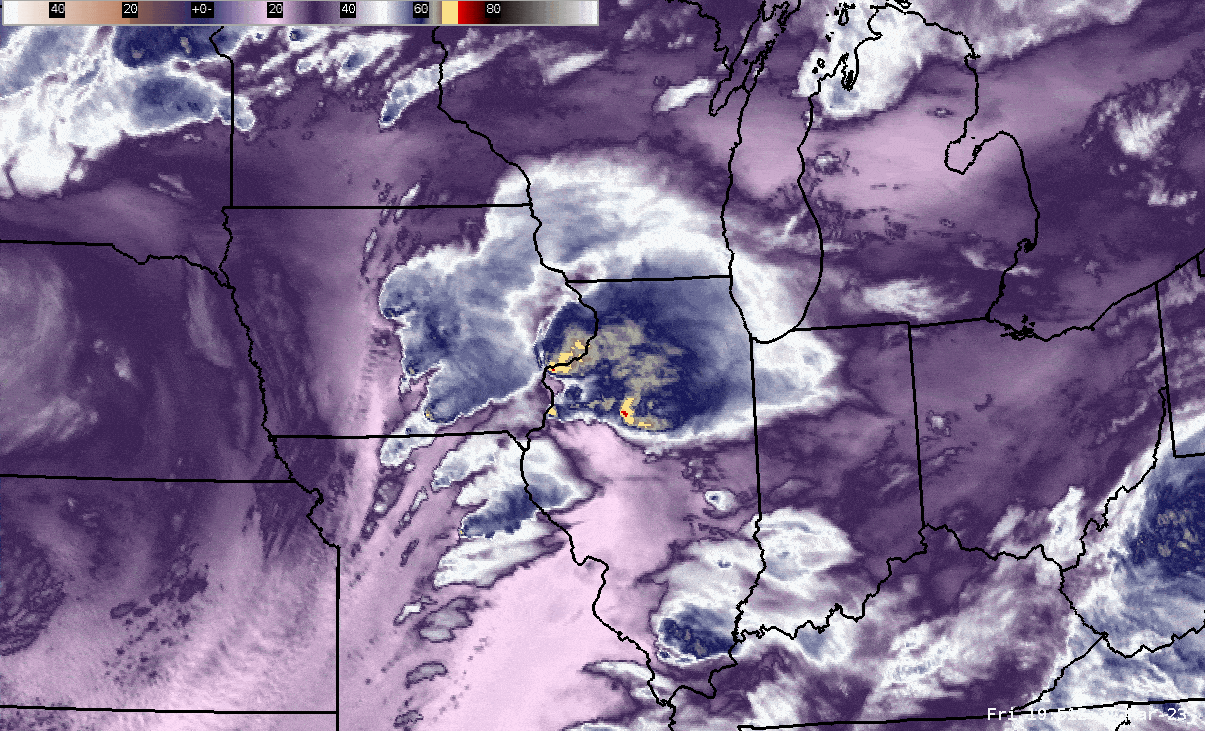
Methods
Data: ERA5 reanalysis (surface + pressure levels), 3/31 00Z – 4/1 21Z, 3-hourly
Domain: Centered on Illinois, 548 × 563 grid points, 3 km resolution
Model: WRF v4.3.3 with default physics, 1-hourly output
- Control: Unmodified ERA5
- Minus Scenario: Control – 2 °C
- Plus Scenario: Control + 2 °C
Analysis: Computed CAPE from WRF output; compared Plus–Control, Minus–Control, and Plus–Minus differences.
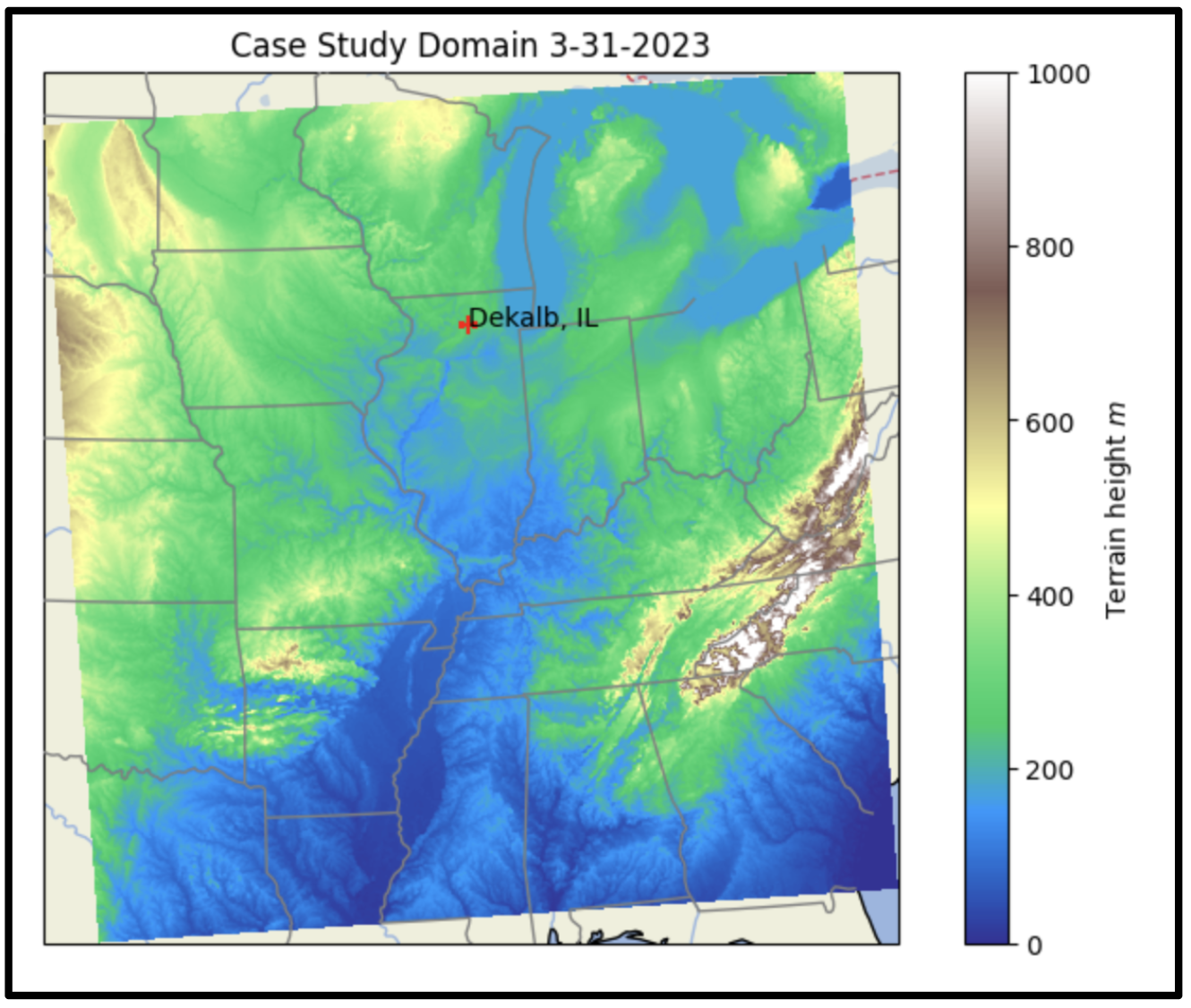
Results
- CAPE: Higher in Plus scenario, lower in Minus scenario
- Storms: Minus scenario produced fewer/weaker cells; Plus scenario produced stronger storms earlier, converging toward control by 00Z
- Spatial shift: Minus scenario suppressed southern-domain storms; Plus scenario enhanced northern-domain activity
- Future work: Add CIN, shear, updraft velocity, and helicity diagnostics; run full PGW experiment
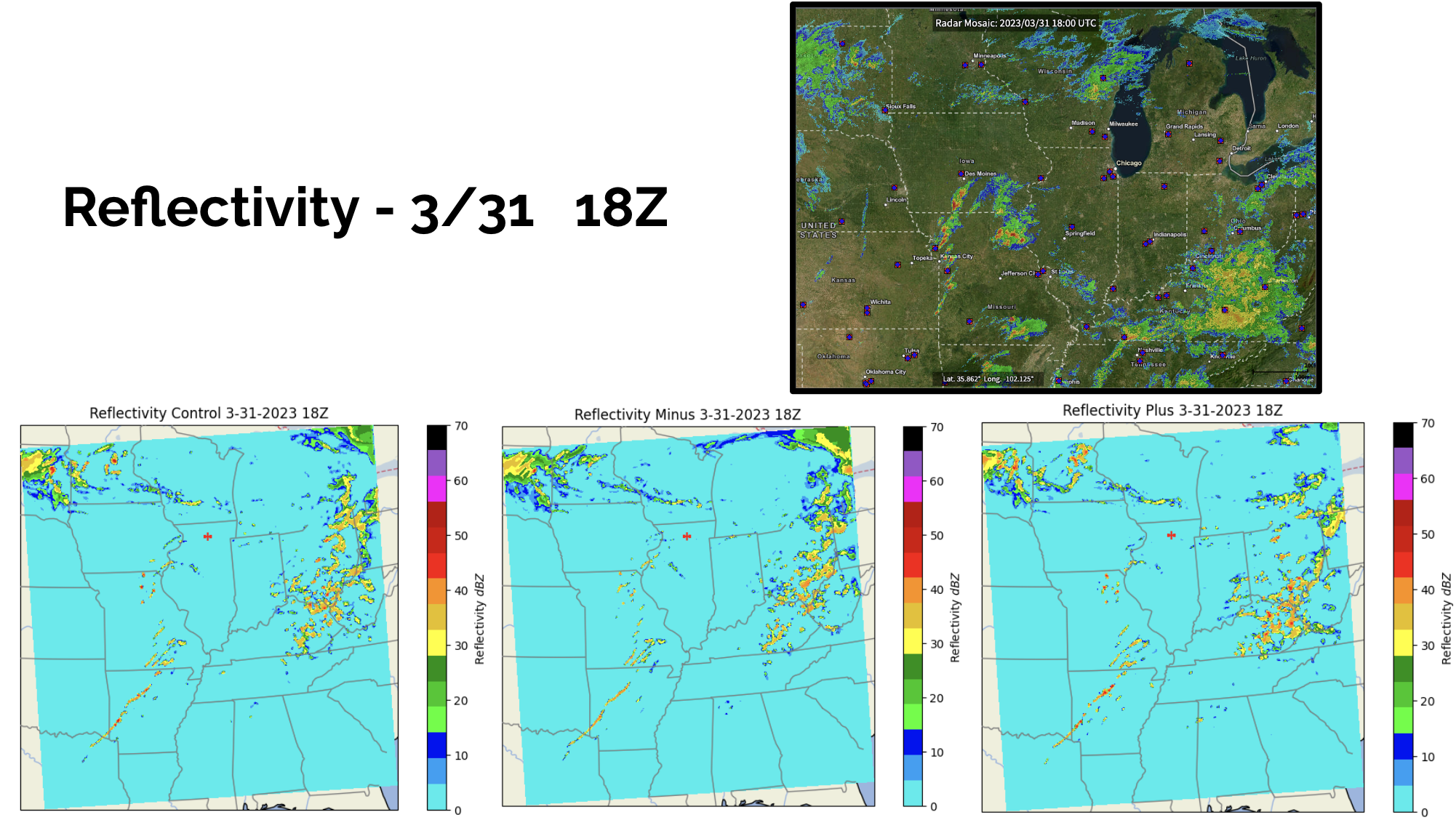
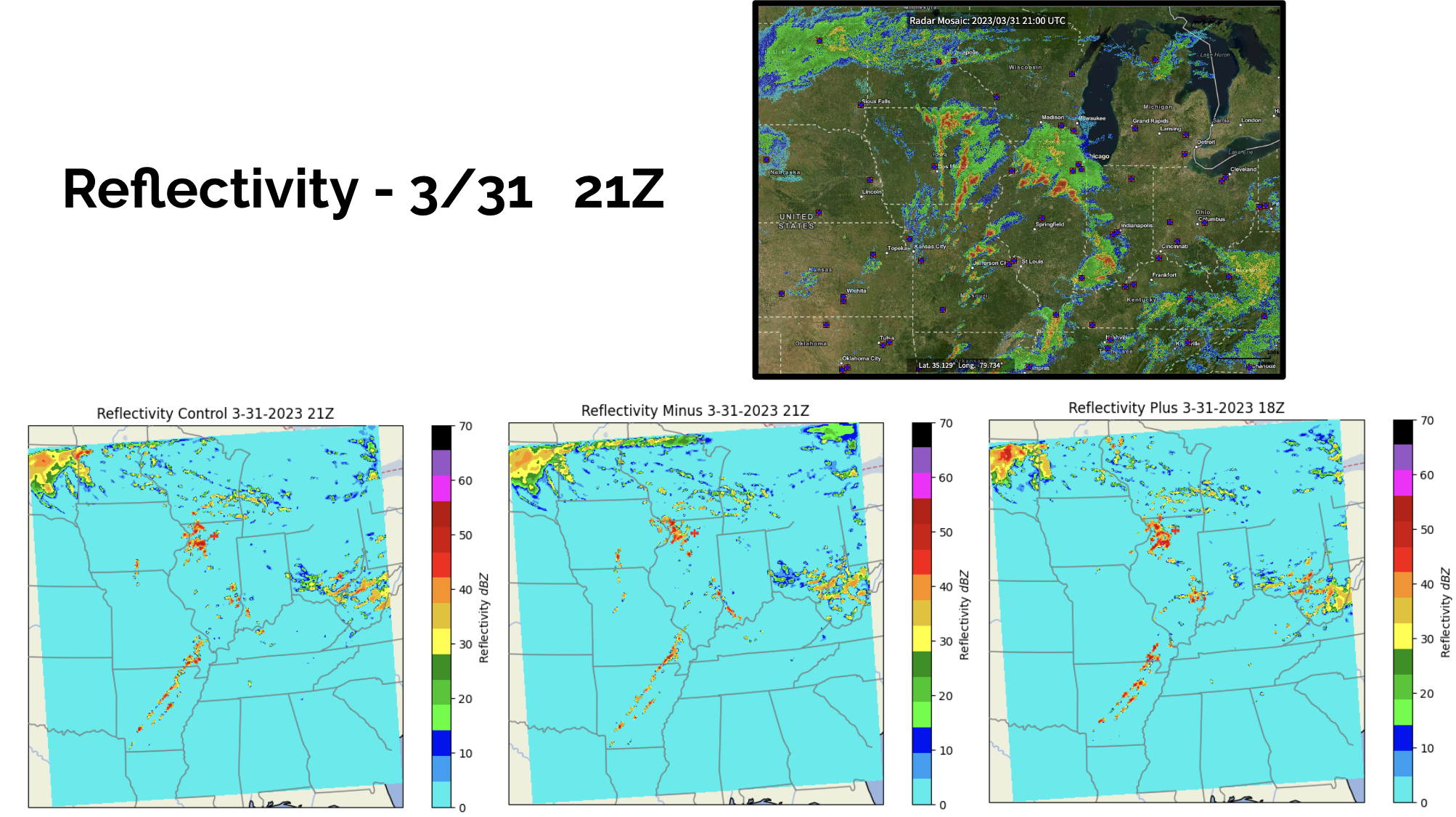
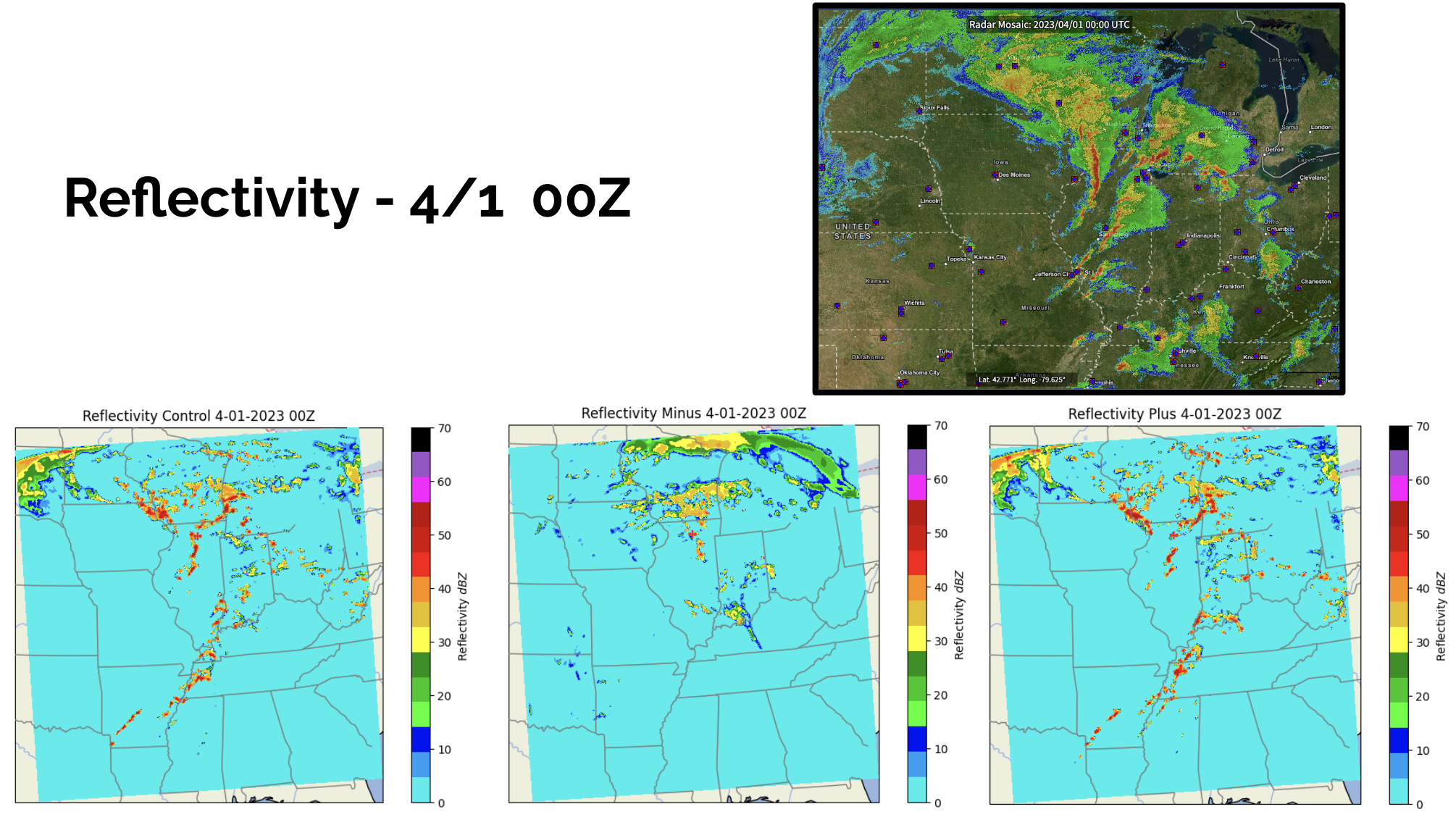
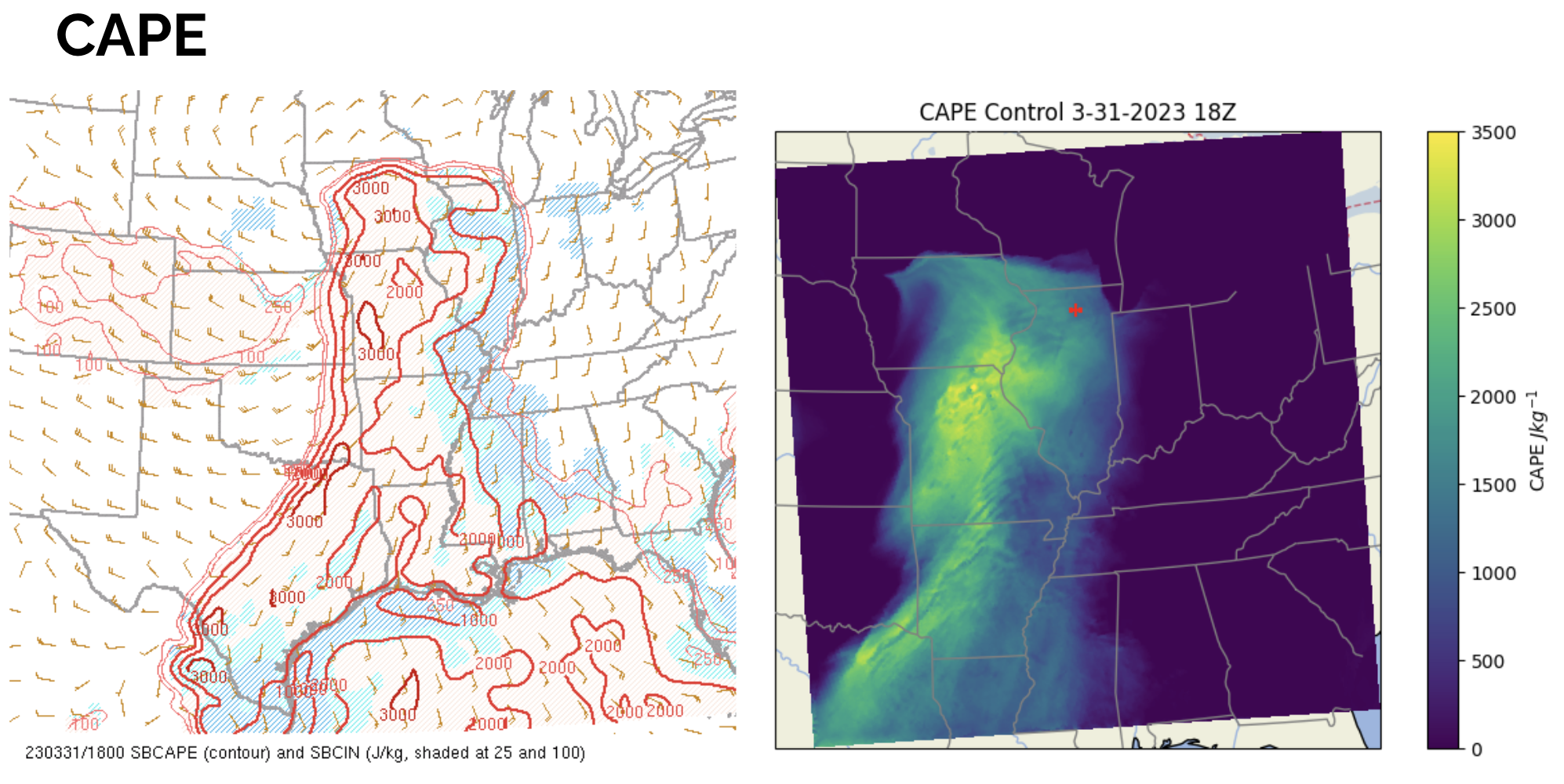
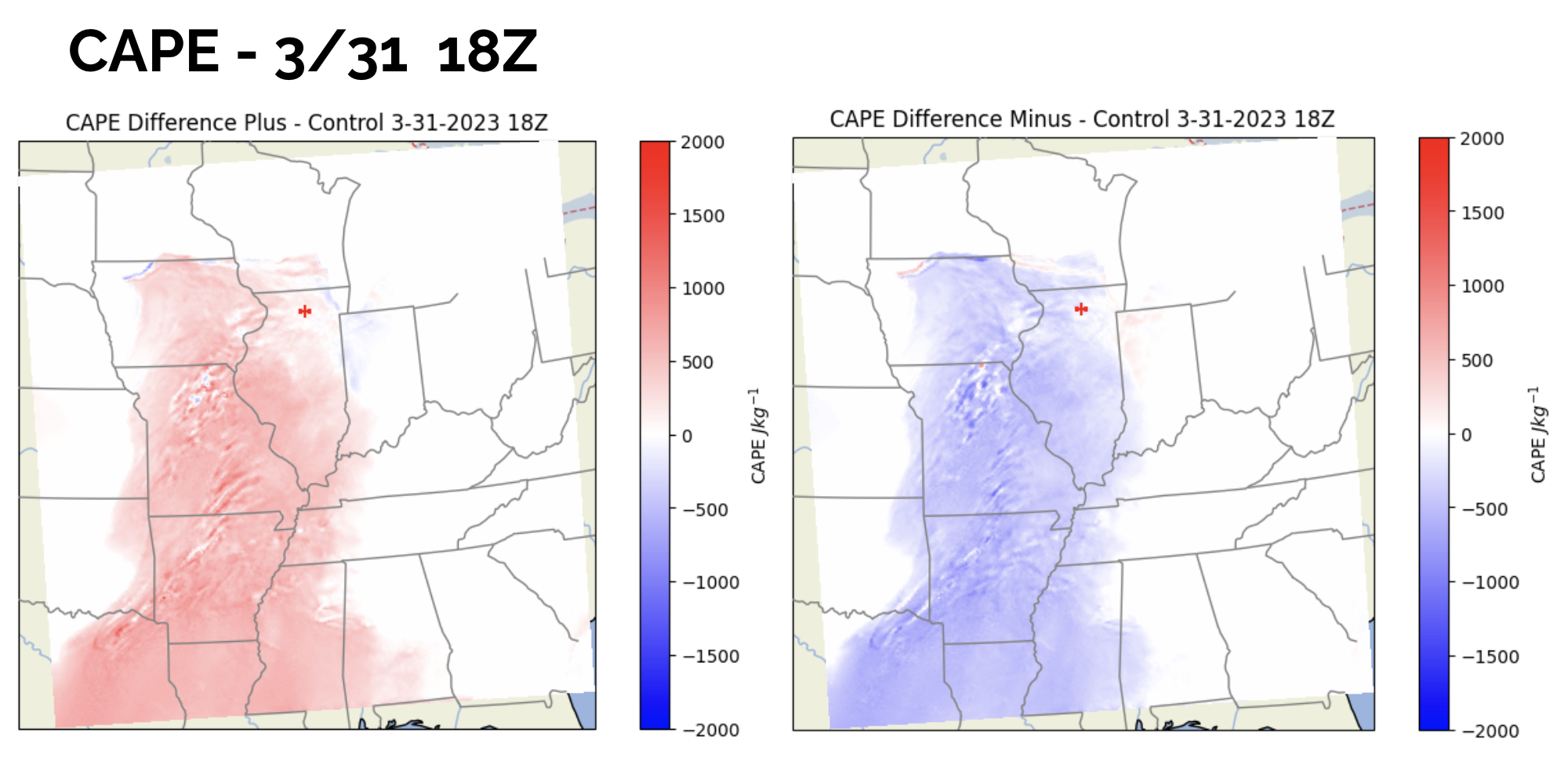
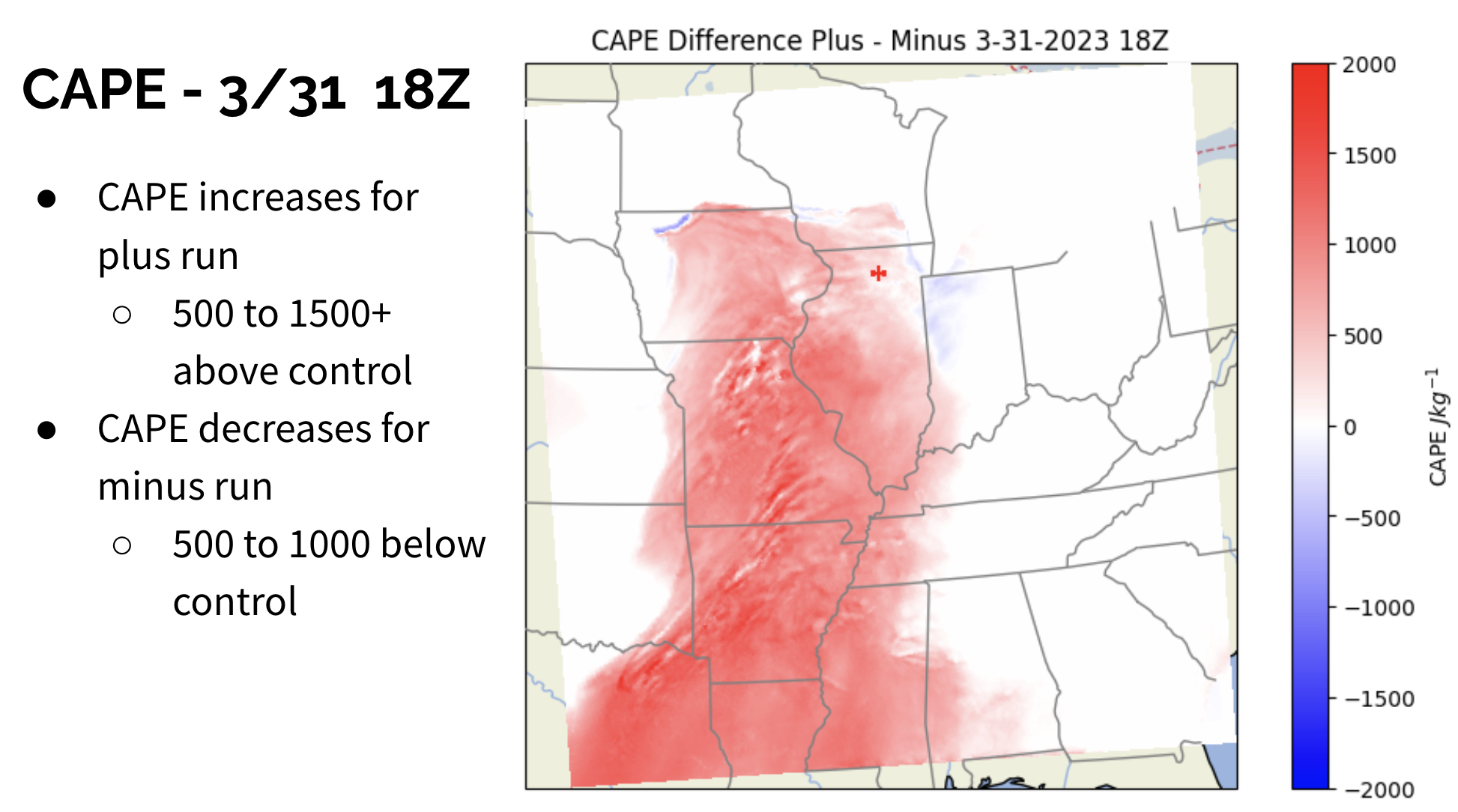
Conclusions
- Even small uniform warming/cooling perturbations can alter CAPE and convective evolution in outbreak environments.
- Warming increased storm intensity and speed of initiation; cooling reduced storm organization.
- PPGW provides a quick sensitivity test before committing resources to full PGW or dynamical downscaling.